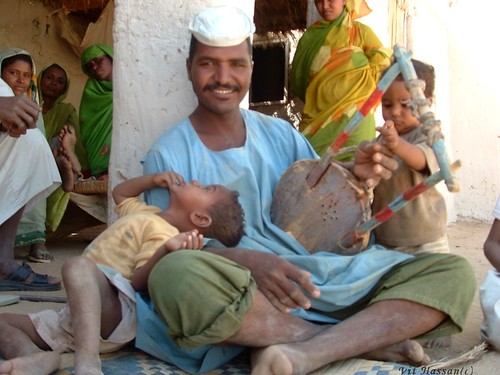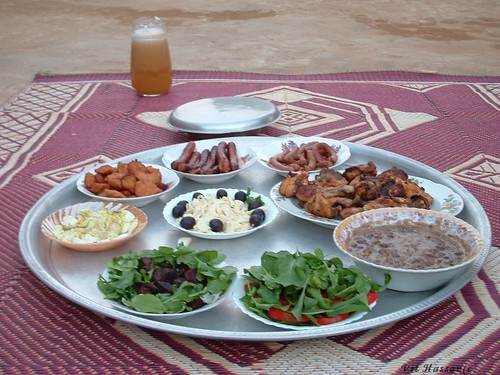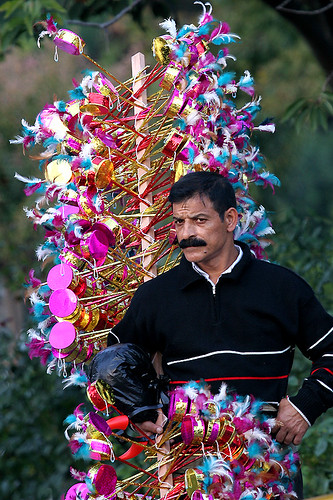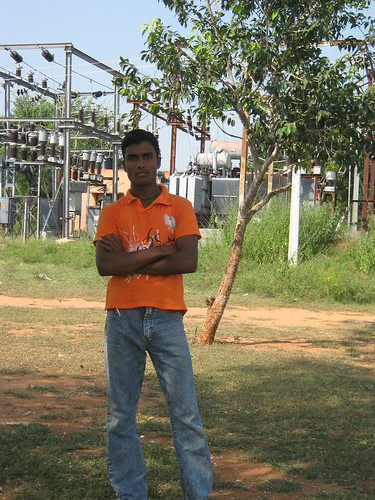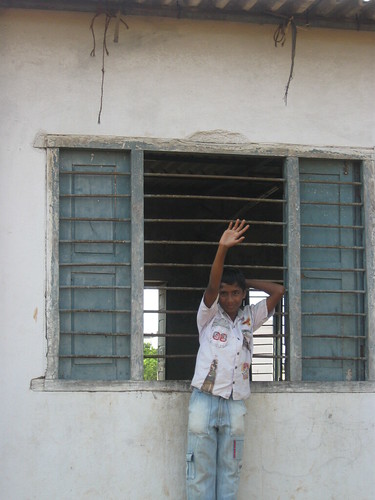A Very Belated Eid Mubarak
We’re back! Ilana and I have resumed classes at APRS boys’ school in Nalgonda, after an extended break for Ramzan and exams. We spent the past three days there, and after a one-day break we’ll be heading there again for the weekend. To introduce the photo slideshow project (see the photos from the first stage on Flickr) Ilana brought her Vizag and Vijayawada slideshows to share with the boys, and I created one of images of Islam around the world. A few of the photos came from my own collection from Palestine and Jordan, while the rest I found online, such as these photos from Ramadan in Sudan and Turkey:
The boys were especially excited to see photos of Saudi Arabia, being the site of two holiest cities in Islam, Mecca and Medina. But they were surprised by the range of other countries I showed pictures from, as they searched our class globe for Singapore, Argentina, and the United States.
That evening for homework each member of the class wrote a description of how they celebrate Ramzan (or Ramadan) here in India. Although Ilana and I were around to taste haleem (well, Ilana did anyway–I’m vegetarian), talk to people about the experience of fasting, and even take advantage of some holiday sales, what better way to introduce the full experience than with the writings of our boys? We were quite pleased with the detail of their descriptions, and we hope you enjoy and learn from them!
Our Ramzan.
By Bari
We are Muslims. In the ramzan Muslims will be Raza! Raza means we are not eat food and drinking water with 5 am to 6:30 pm. We eat food at 5 am that is (saher) and to Namaz to pray and read Quran. 6:30 pm in the raza we will do IFTAR. Iftar means we will eat (khajoor) means dates and some fruits this is called IFTAR.
Quran is our holy book. Its come to Ramaz month. It is the gift of God. We will give respect to Quran. We will leave Raza on 30 days. After 30 days we will do one festival that festival name is EID-UL-FITUR means we will go to EID-GHA and pray the Namaz. This namaz is read at 7:30 am. Namaz is over we will give to shake hand and hugging and say each other (EID MUBARAK) we will go to our home and eat food and drink sheer korma. Sheer korma is very famous in ramazan. Sheer koroma means the milk and shewiya means like a (magi, noodles) we will got our relatives house and we will do salam and say EID Mubarak. This is called our Ramazan festival.
Eid-ul-Fitr, My story
By Siraj
Ramzan Festival
I will wake up on the festival at 5:00 am and go to brought the milk for Sewiyah. I brought 15 litres of milk for the Sewiyah. After that I will take a bath a have fresh. And wear the new clothes. We take the Itar (spray) on the new clothes. It was scent like a spray. After we will go to the (Eid-gah) the big mosque for the prayer. After the prayer we will back to home.
There was a my favourite and special sweet of the (Eid) festival was Sewiyah. I take one cup and drink it. My mom was cooking the Sewiyah very special. In the ramzan the Sewiyah was very special. After the drinking sewiyah we eat food of chicken biryani and curd. After we will go to meet the relatives. We shake hands and say (EID MUBARAK) to each other. After we meet our friends and enjoy. We will take (Eidi). The EIDI the gift to the childrens the relatives and parents gives. My father give me 150 rupees of (EIDI). We will enjoy the lot of the ice-creams, cakes, and burgur. After the enjoying I will get back home and eat the chicken biryani and go to the sleep.

